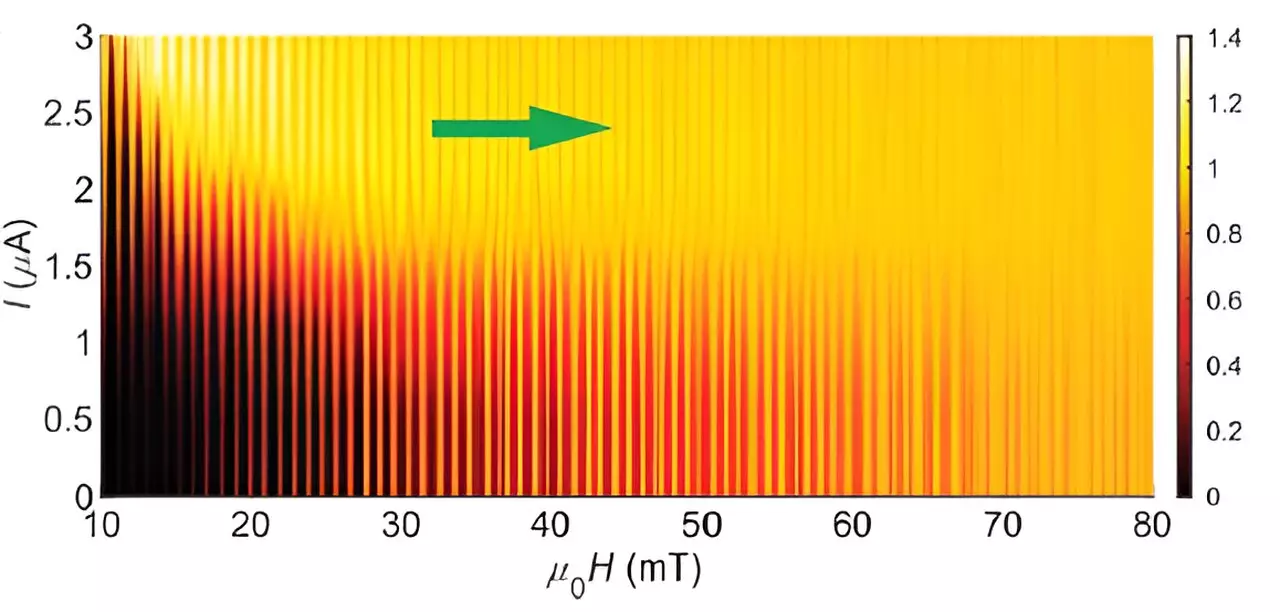The realm of superconductors has been a focal point of scientific inquiry for decades, primarily due to their remarkable ability to conduct electricity without resistance. However, a distinct class of superconductors—topological superconductors—has recently garnered attention for their unique characteristics that promise to revolutionize quantum computing and energy-efficient technologies. Central to their allure are edge states and the complex behaviors of the wavefunctions that accompany these materials.
At the heart of topological materials lies a foundational concept in quantum mechanics: the wavefunction. Traditionally, the behavior of electrons in conductors is understood through straightforward models. In contrast, topological materials defy conventional metaphors by presenting wavefunctions that are fundamentally knotted or twisted. Such complexities lead to fascinating phenomena—specifically, the creation of edge states, which manifest when the topological material interfaces with its surrounding environment. In this respect, edge states are akin to specialized highways for electrons that allow distinct behaviors compared to those in the bulk material.
When examining the implications of these edge states in topological superconductors, we encounter a fascinating dichotomy. While the bulk and edges of these materials may both exhibit superconductivity—meaning they allow for unimpeded flow of electrical current—their mechanisms can differ significantly. This discrepancy can be likened to two distinct bodies of water that, despite existing in close proximity, maintain their unique qualities without merging fully.
Recent research published in *Nature Physics* has highlighted one such topological superconductor: molybdenum telluride (MoTe2). Scientists have revealed that edge supercurrents—currents that flow at the boundaries of a superconductor—display remarkable resilience to variations in the interactions that govern electron pairing, commonly referred to as the “glue.” This property is crucial because strong electron-pairing is essential for sustaining superconductive behavior.
The study observes that, when influenced by an external element like niobium (Nb), the characteristics of MoTe2 alter significantly. Nb possesses a more potent pairing potential than MoTe2, resulting in a phenomena where the higher energy state spills into MoTe2. This interaction enriches the electron-pairing environment but simultaneously unravels an intriguing conflicting dynamic between the differing pairing potentials. The electron wavefunctions at the material’s edges exhibit adaptability, oscillating between the influence of Nb and that of MoTe2, all contributing to the resulting behaviors observed in these edge supercurrents.
Edge currents in topological superconductors serve a dual purpose that is both practical and theoretical. They not only signify the presence of unique electronic behaviors but also set the stage for the manipulation of special particles known as anyons. The defining trait of anyons is their ability to remember their positional context—a feature that lends itself beautifully to quantum computing applications where error resistance is paramount.
The ability to control these edge supercurrents opens pathways toward the realization of quantum computers that operate with unprecedented stability and efficiency. Anyons can be arranged to perform computational tasks in ways that traditional bits cannot, thereby reimagining the foundation of information processing.
Despite the excitement surrounding the properties of topological superconductors, challenges remain. The integration of different pairing potentials, as seen in the interaction between MoTe2 and Nb, highlights the inherent complexities in harnessing these materials for practical applications. Ensuring seamless transitions between different superconducting states while maintaining coherence is a research frontier that requires innovative solutions and sophisticated materials engineering.
Moreover, as scientists strive to push the boundaries of our understanding, the scalability of these systems for larger applications in quantum computing and energy efficiency must also be addressed.
The ongoing exploration of topological superconductors like MoTe2 embodies the dual spirit of inquiry and potential that characterizes modern physics. By unraveling the intricacies of edge states and electron pairing interactions, researchers are carving a path toward a new era in electronic capabilities, especially in the context of quantum computing. As investigations into these remarkable materials continue to evolve, the promise of a future shaped by topological superconductors becomes increasingly tangible, offering exciting prospects for technology and society at large.


Leave a Reply